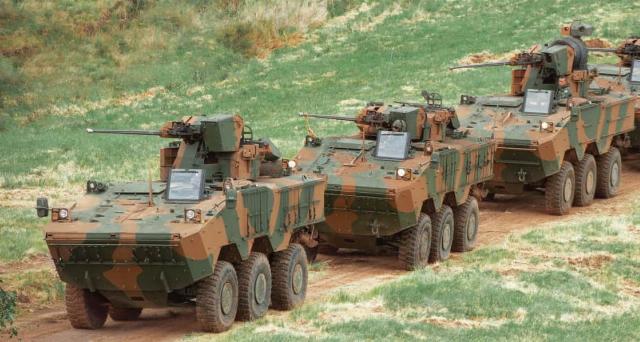A significant number of countries have introduced 8×8 vehicles as basic armored personnel carriers (APCs). Currently, there is a tendency to turn them into infantry fighting vehicles. In parallel, the production of 6×6 wheeled armored personnel carriers with a more compact design is increasing, allowing the use of equipment in confined spaces, as well as facilitating its transportation by air. In addition, the 6x6 technique is better suited for internal security tasks than its larger and heavier 8x8 counterparts.
As with the 8×8 formula, later designs of 6×6 wheeled armored personnel carriers feature a higher level of survivability and improved armament. Often, a stabilized 12.7mm machine gun or a 40 mm automatic grenade launcher is installed in a remotely controlled weapon station (RWS).
In addition, most of them have an electronic architecture that simplifies future upgrades, a combat control system, several 360-degree cameras for monitoring the situation and an environmental control unit for operations around the world in various climatic conditions.
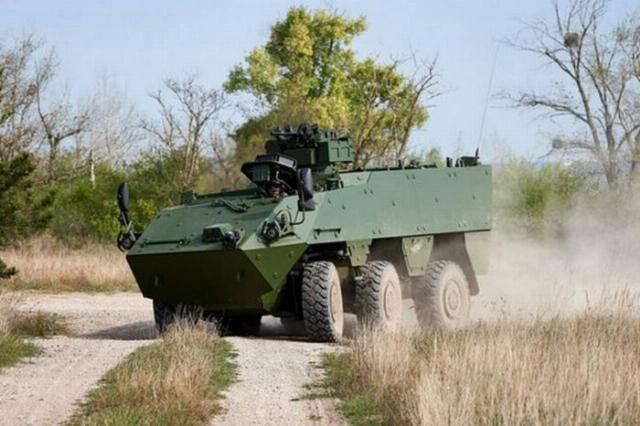
The latest Pandur Evo equipped with RWS with a 12.7mm machine gun
The Austrian army has always preferred the 6×6 armored personnel carrier. She became a customer of the Pandur armored personnel carrier (Pandur) developed by Steyr-Daimer-Puch (now GDELS). The first of 71 copies rolled off the assembly line in Vienna in December 1995.
This was followed by sales to Belgium, Gabon (for testing), the Kuwait National Guard, Slovenia, and the United States for deployment by the U.S. Special Operations Command as an armored ground mobile system.
A wide range of weapons can be installed on the Pandur. At the same time, some Kuwaiti models are equipped with a double turret armed with a 90 mm cannon and a machine gun paired with it.
The original wheeled armored personnel carriers of the Austrian army "Pandur" have been upgraded several times and supplemented with three contracts for the Evo model, including 34, 30 and 36 units, respectively. At the beginning of 2024, the company signed another contract for 225 Pandur armored personnel carriers worth about 1.2 billion. euro. Within its framework, GDELS will supply eight variants, including a 120 mm mobile mortar and 30 mm Rheinmetall SkyRanger anti-aircraft systems.
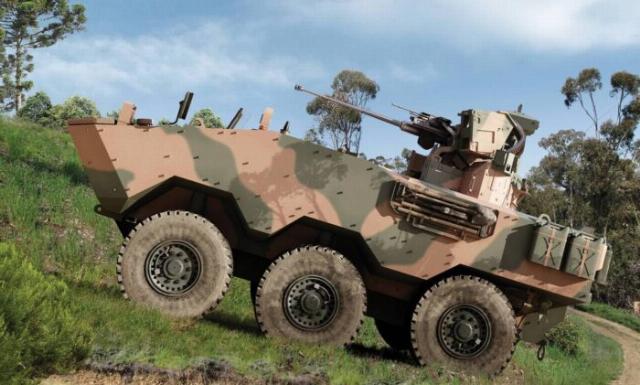
Wheeled armored personnel carrier 6x6 "Guarani"
Some countries have not switched to 8×8 technology. For many years, Brazil operated large fleets of Engesa EE-9 Cascavel armored vehicles with a 6×6 wheelbase and the EE-11 Urutu 6×6 armored personnel carrier, a large number of which were exported before the company ceased operations.
Currently, the Urutu is being replaced by a 6×6 locally produced Guarani armored personnel carrier. The model is fully amphibious and is usually armed with a protected combat station (PWS) or RWS, equipped with a dual-threaded MK44 cannon and a 7.62mm twin machine gun.
The total weight of the car depends on the version, but is usually about 18.3 tons. Export sales were carried out to Ghana, Lebanon and the Philippines. The need for the Brazilian army by 2030, if financing allows, is set at 2044 vehicles.
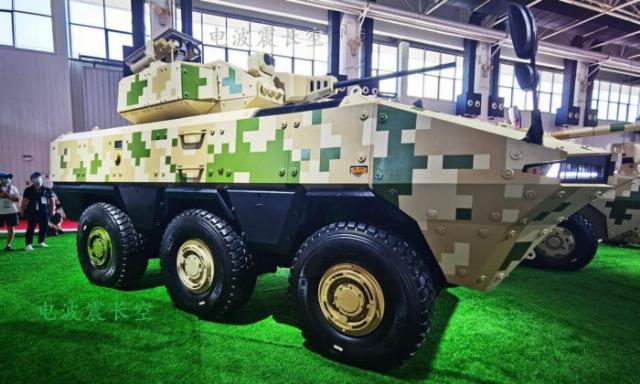
Wheeled APC VN22
For its part, the Chinese company NORINCO has developed and put into production the WZ-551 6×6 armored personnel carrier, which the People's Liberation Army of China designated as the "Type 92". It was built in large numbers for the domestic and export markets and was used for a wide range of combat missions, including as a launch platform for anti-aircraft missiles.
The model became the base for the VN2B version, which has a turret armed with a 30 mm cannon, a 7.62mm machine gun and HJ-74 anti-tank missiles. VN2C has a higher level of ballistic and mine protection.
More recently, China has developed the VN22 6×6 armored personnel carrier, which is already being produced in Iraq. This is a conventional design with a driver in front on the left and a diesel powerplant on the right.
Meanwhile, France replaced its tracked AMX-10Ps with 630 Nexter (now KNDS) VBCI in two configurations: BMP and command post. They were used together with the Arquus VAB 4×4, but now they are being quickly replaced by the Griffon.
About 5,000 Vabs have been built, the largest user of which is the French army, but only in a 4×4 configuration. The 6×6 model was developed and exported to Ivory Coast, Cyprus, Italy, Mauritius, Morocco, Oman, Qatar and the UAE, but in some cases they have already been replaced.
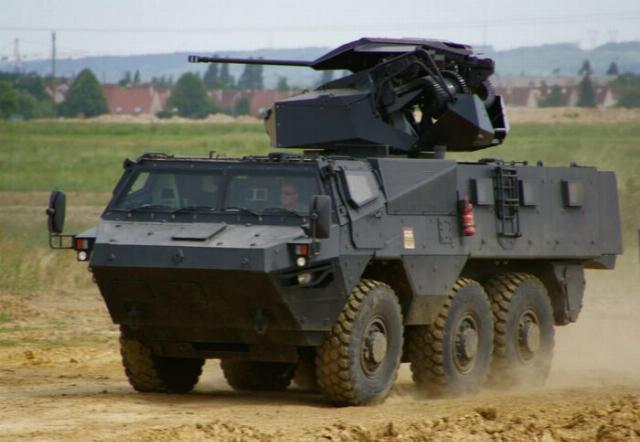
Wheeled armored personnel carrier VAB Mk 3
Arquus has also developed, using internal research and development funding, the VAB Mk 3, which is intended for export sales and is sold only in a 6×6 configuration. The base vehicle is fully amphibious, but when equipped with overhead armor, this feature is lost.
VAB Mk 3s have already been sold to Saudi Arabia and Tunisia (through the American company Mack Defense and are known as Lakota). It can be equipped with a range of weapons options, including a two-seat John Cockerill Defense turret with a 90 mm cannon and a 7.62mm twin MG machine gun.
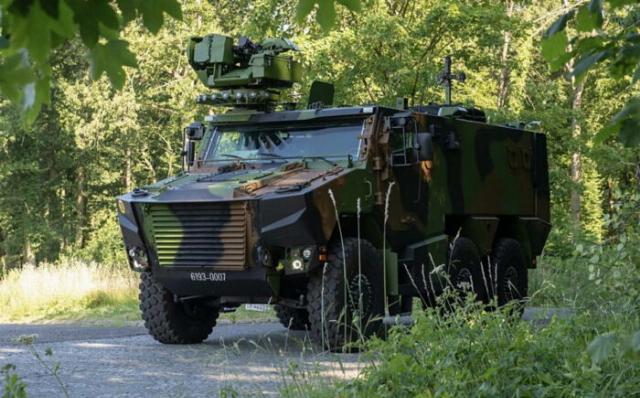
Armored personnel carrier “Gryphon”
The 6×6 Griffin successor became the first new generation armored personnel carrier to be deployed by the French army as part of the ambitious Scorpion program .
Compared to the VAB, the Griffin has a larger volume, payload and protection, since the first representative of the family is an armored personnel carrier, but there will be at least ten options, including a 120 mm mortar, a command post, an advanced observer and an ambulance.
The French army requires 1,872 Griffon, more than 600 vehicles have been built in total, while Belgium expects 382 units to be delivered.
Production is underway at the KNDS plant in Roanne with key partners including Arquus (power supply and drive line) and Thales (optronics). The Griffon APC is equipped with Arquus Hornet RWS.
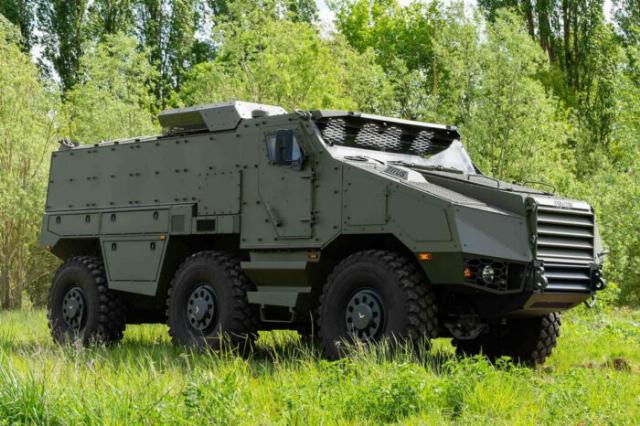
Tactical Infantry Transport and Support System (TITUS)
With private funding from KNDS, Nexter Systems has developed a tactical infantry transport and support system (TITUS) 6×6, which has a high level of cross-country terrain, since it is based on the chassis of the Tatra 817 truck.
The total weight of the TITUS reaches 27 tons, as well as a high level of protection against mines and improvised explosive devices. The vehicle can be equipped with various roof-mounted weapons, including an RCT armed with a 30 mm cannon and a 7.62mm machine gun.
The first customer was the Czech Republic , which took delivery of 62 armored personnel carriers in three versions: for communications (36), command (6) and fire support coordination (20).
The Finnish company Patria built a large number of wheeled armored personnel carriers of the XA 6×6 series for the domestic and export markets, and then continued the development of the highly successful armored modular vehicle (AMV) 8×8.
Its latest product is the Common Armored Vehicle System (CAVS), which is currently selected by Estonia, Finland and Sweden, and Germany joined the research and development phase on May 2, 2024. Production is already in full swing, and in March Sweden signed the last contract for the supply of 321 machines.
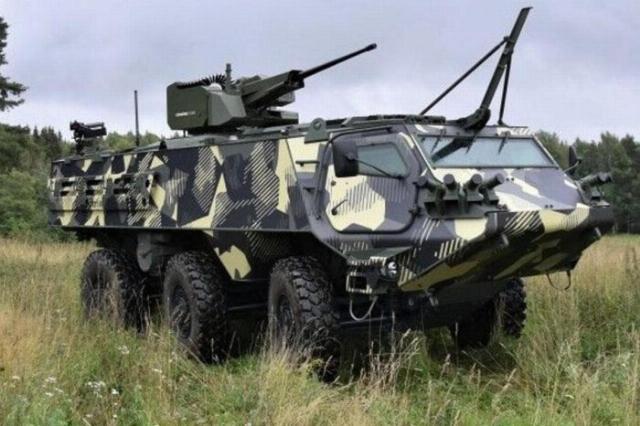
Wheeled armored personnel carrier CAVS 6x6 from Patria
The German Armed Forces itself employs almost 1,000 Fuchs 6×6 armored personnel carriers in many variants. Since its first appearance in 1979, it has been constantly upgraded, and the latest version is the Fuchs 1A8.
The result of further development was the RMMV Fuchs 2 with a larger volume, payload and protection with a typical gross weight of up to 23 tons.
Kuwait took delivery of 12 vehicles, and the UAE – 32 for the specialized intelligence service NBC. At the same time, Algeria has been developing the design under license for many years, and the first batch consists of 920 machines. At the same time, RMMV still supplies some subsystems, such as powertrains and suspensions.
More recently, Algeria has ordered additional Fuchs 2 machines, the production of which is planned to begin in Ukraine.
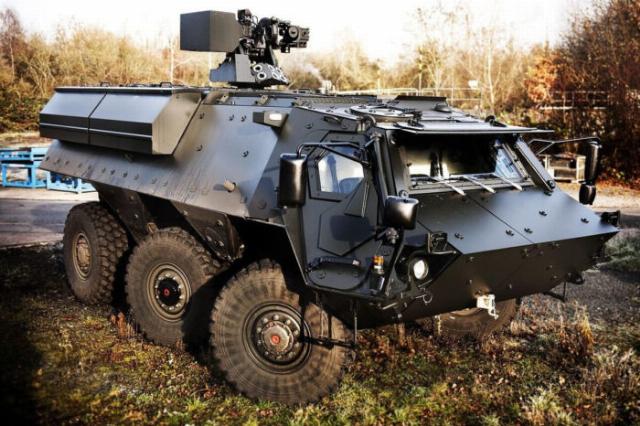
Wheeled APC 6x6 "Fuhs 2"
The Indonesian PT Pindad developed a machine similar to the French VAB, called Anoa, which was originally equipped with PWS, usually armed with a 12.7mm machine gun. Since then, more specialized versions have been introduced, including an amphibious model, a medical support vehicle, an evacuation vehicle, a truck and a mortar.
In addition, there is a variant with a direct-fire weapon called Badak. The model has a different hull design with a driver in front, a two-seat turret and a 90 mm cannon in the center and a diesel powerplant in the rear.
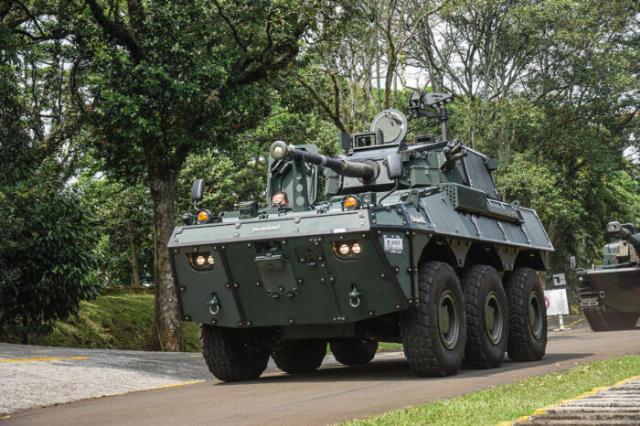
Badak armored personnel carrier with a 90 mm cannon
The South Korean company Doosan developed the Black Fox wheeled armored vehicle in versions 6×6 and 8×8, but it was not selected by the ROK army. This type was offered for export. A series of 22 vehicles with a 6×6 formula and a 90 mm cannon were built for Indonesia.
Black Fox armored vehicle in version 6x6
The initial competition for the ROK army was won by Hyundai Rotem with its KW1 (6×6) and KW2 (8×8), both of which were fully amphibious. The first contract was concluded for 675 units in various configurations with a long-term demand of more than 2500.
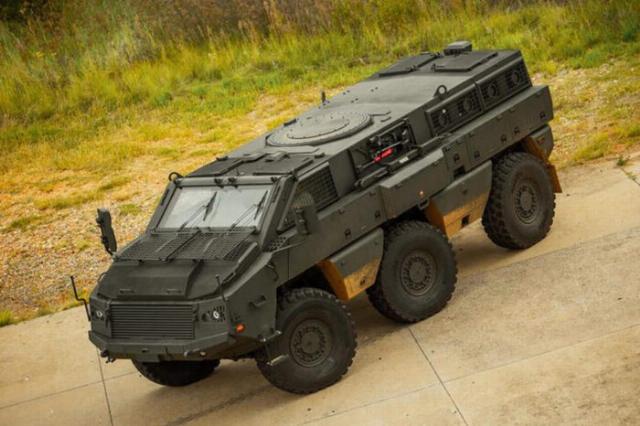
The Mbombe 6x6 APC is part of a complete family of vehicles developed by Paramount for the international market.
The South African company Paramount has completed the development of its Mbombe 6×6 machine, which has a total weight of up to 22.5 tons and can be equipped with weapon stations armed with a 30 mm cannon and a 7.62mm machine gun.
The Mbombe APC is also sold in 4×4 and 8×8 configurations, which share common components with obvious advantages in training and logistics. Jordan became the first customer, followed by Kazakhstan (local production), an undefined country in the South African Development Community, and, most recently, Ecuador.
The General Staff of the Armed Forces of Ukraine has published images of the Paramount Mbombe 6 armored personnel carrier equipped with a remote combat station of local production, claiming that it is "a new armored vehicle of Ukrainian production."
In a statement, Paramount Group said: "The Mbombe 6 combat vehicle, which can be seen on social networks in Ukraine, is a demonstration vehicle. It was shipped to Ukraine with all necessary export permits before the outbreak of the war. The sample was tested in the APU for several months. The permit to export the car was recently extended until June 2025."
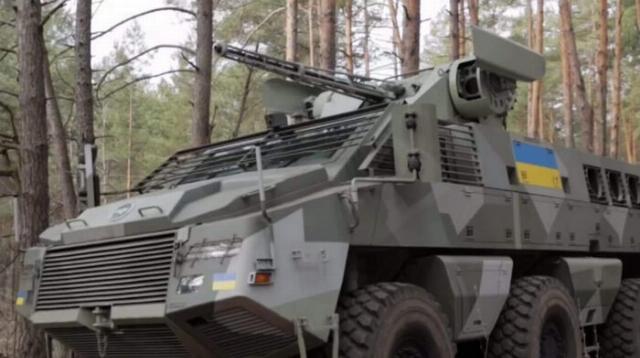
Mbombe 6 armored personnel carrier for Ukraine. It is equipped with a locally developed "Spis-Synthesis" combat module.
The Turkish company FNSS Savunma Sistemleri built a large number of tracked vehicles for domestic and export customers, but subsequently moved to the highly competitive wheeled market. Her first success was the Pars 8×8 for Malaysia.
This was followed by Oman, which signed a contract for 172 Pars, some of which in a 6×6 configuration are equipped with a single FNSS Sabre turret armed with a 25 mm cannon and a 7.62mm machine gun paired with it.
More recently, the Turkish government has signed a contract with FNSS for the latest generation of Pars, which includes versions 8×8 and 6×6, with some of the latter intended for use by special forces. Libya also received several Pars 8×8 and 6×6 armored personnel carriers.
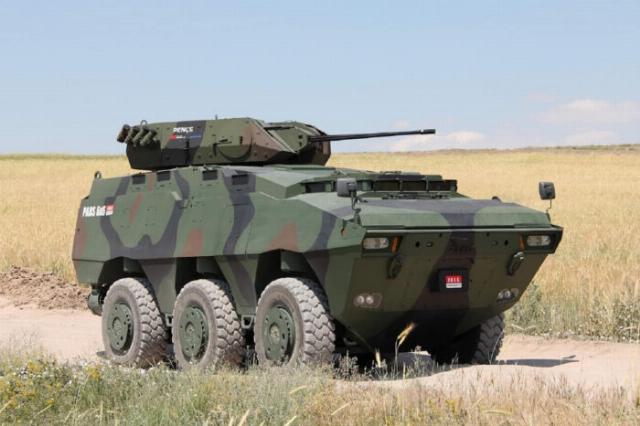
Wheeled armored personnel carrier Pars 6x6 from FNSS
The Turkish company Otokar has built a large number of armored vehicles for domestic and foreign customers.
One of the company's latest developments is the Arma family, which is sold in 6×6 and 8×8 configurations. It is known that 6×6 was sold to Bahrain, and Estonia became the last buyer. In March 2024, an Otokar representative stated that the total Arma production in 6×6 and 8×8 formats currently exceeds 500 units.
The combination of lower cost and greater mobility, as well as the emergence of increasingly powerful but compact turrets and RWS, has created a dynamic market for 6×6 platforms for personnel transportation and other functions. As always, experts are wondering: will all available competing designs eventually become profitable programs?
Based on the materials of the resource shephardmedia.com
